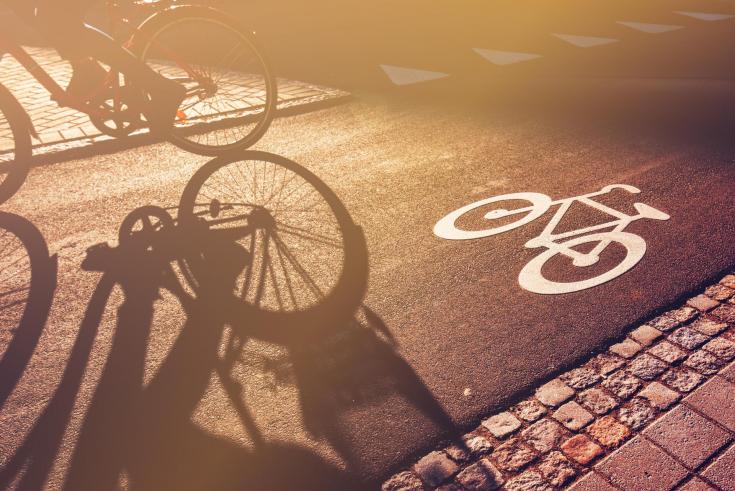How to decide the location and design of cycling lanes?

During the webinar on strategic planning for cycling, the Policy Learning Platform received a question to request more information on how the City of Zaragoza takes decisions concerning the design and location of bike paths. In addition, to receive more information on which variables are considered and which support systems and tools are used to that end.
The
of Marina Abadía Miranda (Municipality of Zaragoza, Mobility Department) concerning the Bike Masterplan of Zaragoza specifies that this instrument pursues the strategic goals of reducing the reliance on private motorized transport and of integrating cycling into the wider mobility at city level. It also underlines that the development of infrastructure is crucial to integrate the bicycle among the usual modes of transport in the city (see slides n. 3 and 4).
As can be seen from the strategic plan (i.e. Chapter 11 of the Bike Masterplan) the decisions taken in Zaragoza with regard to the development of the cycling infrastructure are mainly guided by three priority objectives, namely:
- Widening the network of bike lanes to give cyclists the possibility to move safely along main streets without sharing the roadway with motorized vehicles and without invading the space for pedestrians;
- implementing traffic calming schemes on side streets with the introduction of stringent speed limits for motorized vehicles to enable the safe use of these streets by cyclists and pedestrians;
- equipping suburban roads with cycling infrastructures and adapting rural paths for the use of bicycles to support cycling tourism.
Information on possible future decisions related to the design and location of the cycling infrastructure can also be found in the proposal for the revised sustainable mobility plan (SUMP) that the City of Zaragoza finalized in 2019.
The document at hand acknowledges the existence of problems, such as remaining areas that are not yet reachable by bike as well as the partial effectiveness of traffic calming schemes (i.e. 30 km/h limit, one-way circulation for motorized vehicles). In parallel, it also highlights the opportunities to be pursued, which are consequently expected to guide further infrastructural developments for cycling in Zaragoza. In this respect, it is worth to recall a better integration of the cycling infrastructure with public transport, better cycling connections to reach businesses located within the first metropolitan ring and the valorisation of the rural heritage in the greater metropolitan area through better cycling paths, among others.
In addition, when Marina Abadía Miranda was asked about the preferred option in Zaragoza when it comes to the design of cycling paths, she stated that 'one-way' cycling paths are preferred to 'two-ways' ones due to the structure of the city, where the heritage and the limited space available, especially in the historical center, make it necessary to lean towards more compact solutions.
Explore other relevant information below, such as Interreg Europe Policy Learning Platform validated good practices and to sources of policy information from the knowledge hub of the Policy Learning Platform as well as from the European Commission.
Good practices
- Guidelines for pedestrian and cycling infrastructure (CYCLEWALK project). This experience from Vilnius (Lithuania) confirms the importance of planning and implementing a durable cycling infrastructure and of agreeing on specific requirements for its construction.
- Bicycle infrastructure network in Seville urban mobility (TRAM project). Seville (Spain) has also adopted a Bike Masterplan. The document contemplates a series of criteria for network design, namely: segregation from motorized traffic; connectivity between business areas and residential neighbourhoods; network continuity; homogeneity in the design and pavement of cycling paths and bi-directionality (i.e. almost all paths should ‘two-ways’).
Knowledge hub
- Infrastructure development for cycling. This was the second of our Cycling Cities webinar series. Here you can find the recording as well as all the presentations that were delivered and the main take-aways that we were able to draw based on the discussion that took place. I recommend you to consider exploring the
of Meredith Glaser (University of Amsterdam) on quality criteria for future cycling infrastructure.Document
- Unlock funds for cycling in your region. This article gives flash information on the resources that have been made available by the EU to support the development of the cycling infrastructure in the context of the new Multiannual Financial Framework adopted for the period 2021-2027 as well as under the Recovery and Resilience Facility. It also includes a link to the country specific guidelines developed by the European Cyclists’ Federation (ECF) for the EU-27. These guidelines contain information that you could find useful, including on additional good practices on infrastructure development for cycling from other EU member states. Here you can access the guidelines for Portugal and Spain.
-
. This policy brief explores various initiatives in Interreg Europe and at the European level and could offer you further insights on how to foster urban cycling in your city.Document
- Solutions for urban-rural connections. This recent article from our library (and the EU CYCLE project) is interesting as it deals with solutions for the development of peri-urban cycling connections which, as indicated above, is one of the challenges of Zaragoza when it comes to better linking the city with suburbs and rural areas. I have personally experienced one of the good practice described therein, i.e. the F3 cycle highway (Brussels-Leuven), and I can confirm its value both for commuters and cycling tourists.
European Commission and other sources
- The Directorate General for Mobility and Transport (DG MOVE) has gathered information on existing cycle infrastructure quality design standards. The guidelines listed in this webpage come from a variety of EU Member States, as well from Switzerland, the United Kingdom and the United States of America.
- The basic quality design principles for cycle infrastructure and network elaborated by DG MOVE offer information that you may find useful on the safety, attractiveness and comfort of the cycling infrastructure.
- CIVITAS (EU funded initiative). You may consider consulting the solutions on cycling infrastructure design gathered in the context of the handshake project.
